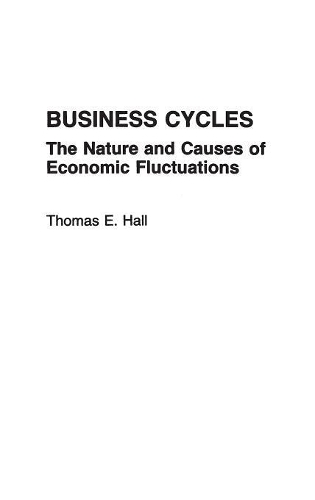
Business Cycles: The Nature and Causes of Economic Fluctuations
(Hardback)
Publishing Details
Business Cycles: The Nature and Causes of Economic Fluctuations
By (Author) Thomas E. Hall
Bloomsbury Publishing PLC
Praeger Publishers Inc
26th June 1990
United States
Classifications
Tertiary Education
Non Fiction
338.542
Physical Properties
Hardback
256
Description
Hall's excellent survey of business cycles is concise, lucid, and up-to-date discussing not only early theories of the business cycle and Keynesian and monetarist models, but also the rational expectationist and new Keynesian models along with actual business cycles. . . . Strengths of the book include an excellent bibliography and Hall's insightful history of business cycles from the panic of 1907 to the long cyclical expansion beginning in late 1982. Choice Intended as a primary text for upper-level undergraduate and graduate courses in business cycles and economic fluctuations, this book treats the nature and causes of business cycles. In contrast to previous works on the subject, which have tended to focus on basic macroeconomic models and intermediate level theory, Business Cycles offers both a broader scope and more in-depth coverage, concentrating on modern theories of the business cycle, data analysis, and recent and historical episodes of economic fluctuation. The author amplifies and combines the various theories that comprise the modern view of business cycles and develops a systematic rationale for economic fluctuations that integrates the key concept of economic shocks. Hall demonstrates that an economy grows over time but receives periodic shocks--such as oil price increases or monetary instability--which generate fluctuations. In addition to examining the nature of shocks that cause recessions and expansions, Hall suggests ways to forcast these cycles. Hall begins with a general overview of economic cycles and economic indicators and goes on to review the historical explanations for economic fluctuations that form the foundation for more modern theories. The contemporary theories of fluctuations--Keynesian, and real business cycles--receive extended treatment. Each theory is discussed in detail in a separate chapter that includes relevant empirical data. Hall then describes the nature and causes of several business cycles during the twentieth century, enabling the reader to see how the various alternative models of cycles explain actual phenomena over time. Finally, he examines some macroeconomic puzzles in the study of cycles and concludes with some observations about the performance of macroeconomic forecasting methods.
Reviews
Hall's excellent survey of business cycles is concise, lucid, and up-to-date, discussing not only early theories of the business cycle and Keynesian and monetarist models, but also the rational expectationist and new Keynesian models along with actual business cycles. The book is based on Hall's lecture notes for a business cycles course he taught at Miami University, and although, as he asserts, it can be used as a text in such courses, it can also be read profitably by informed general readers and lower-division college students. Strengths of the book include an excellent bibliography and Hall's insightful history of business cycles from the panic of 1907 to the long cyclical expansion beginning in late 1982. The book could benefit from more complete discussion of the type of economic time-series analysis developed by the National Bureau of Economic Research (and adopted by the US Department of Commerce) and of how the National Bureau currently identifies business-cycle turningpoints. Nevertheless, Hall's work should be a high-priority acquisition for all college, university, and public libraries.-Choice
"Hall's excellent survey of business cycles is concise, lucid, and up-to-date, discussing not only early theories of the business cycle and Keynesian and monetarist models, but also the rational expectationist and new Keynesian models along with actual business cycles. The book is based on Hall's lecture notes for a business cycles course he taught at Miami University, and although, as he asserts, it can be used as a text in such courses, it can also be read profitably by informed general readers and lower-division college students. Strengths of the book include an excellent bibliography and Hall's insightful history of business cycles from the panic of 1907 to the long cyclical expansion beginning in late 1982. The book could benefit from more complete discussion of the type of economic time-series analysis developed by the National Bureau of Economic Research (and adopted by the US Department of Commerce) and of how the National Bureau currently identifies business-cycle turningpoints. Nevertheless, Hall's work should be a high-priority acquisition for all college, university, and public libraries."-Choice
Author Bio
THOMAS E. HALL is Associate Professor of Economics at Miami University, Ohio. He served as Visiting Senior Economist at the U.S. State Department's Bureau of Economic and Business Affairs, 1989-90. He is the author of numerous articles that have appeared in such journals as Review of Economics and Statistics and the Journal of Industrial Economics.
